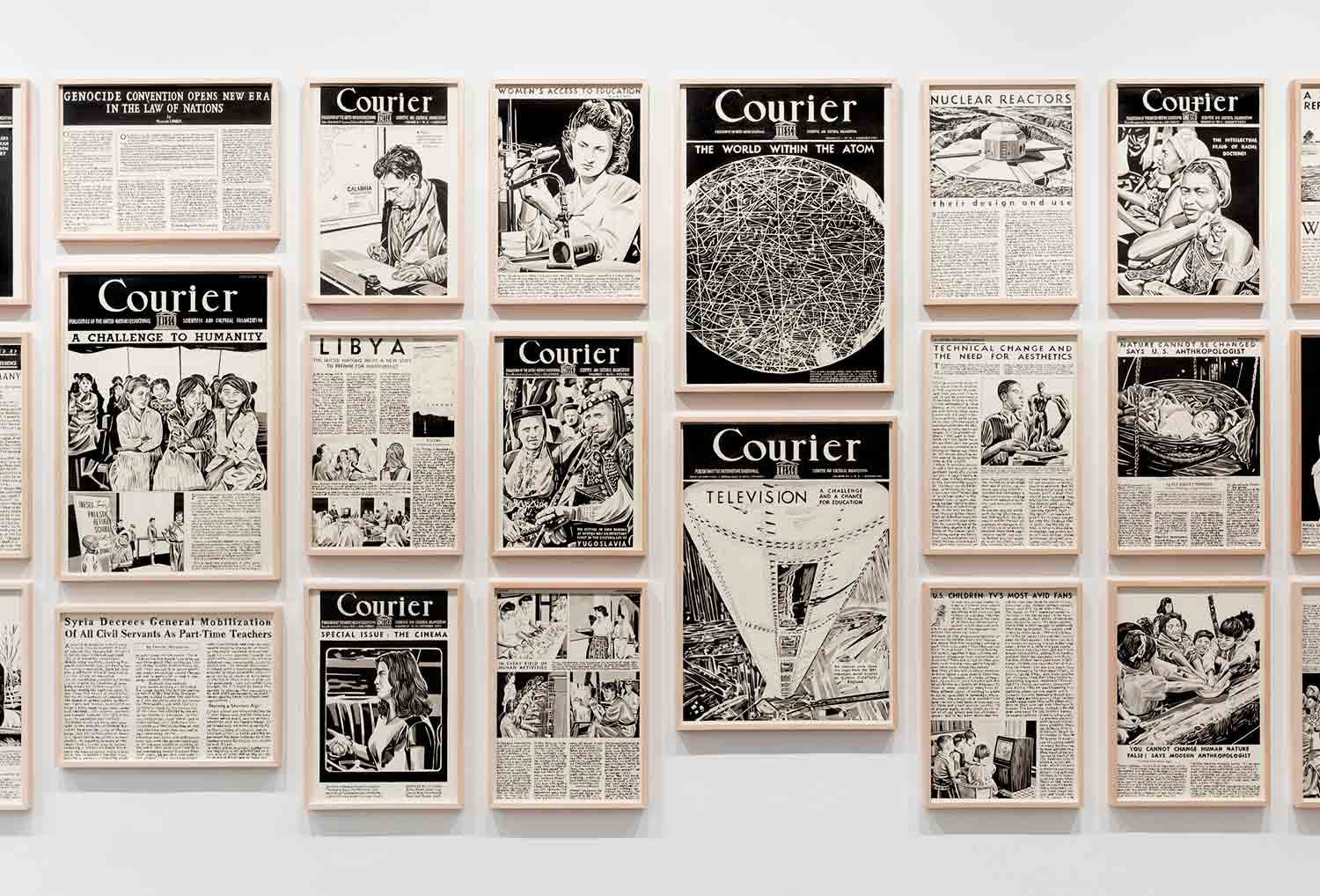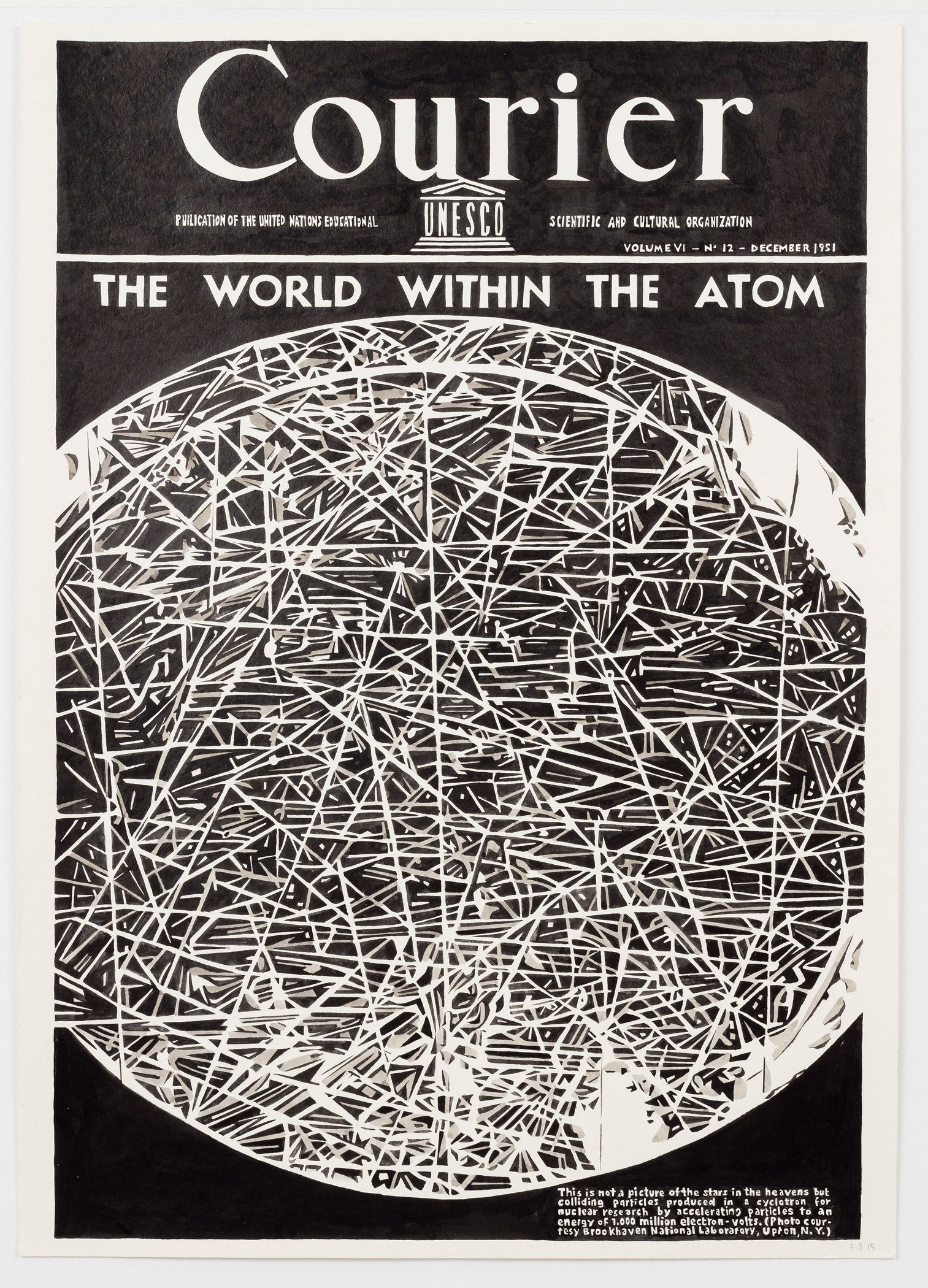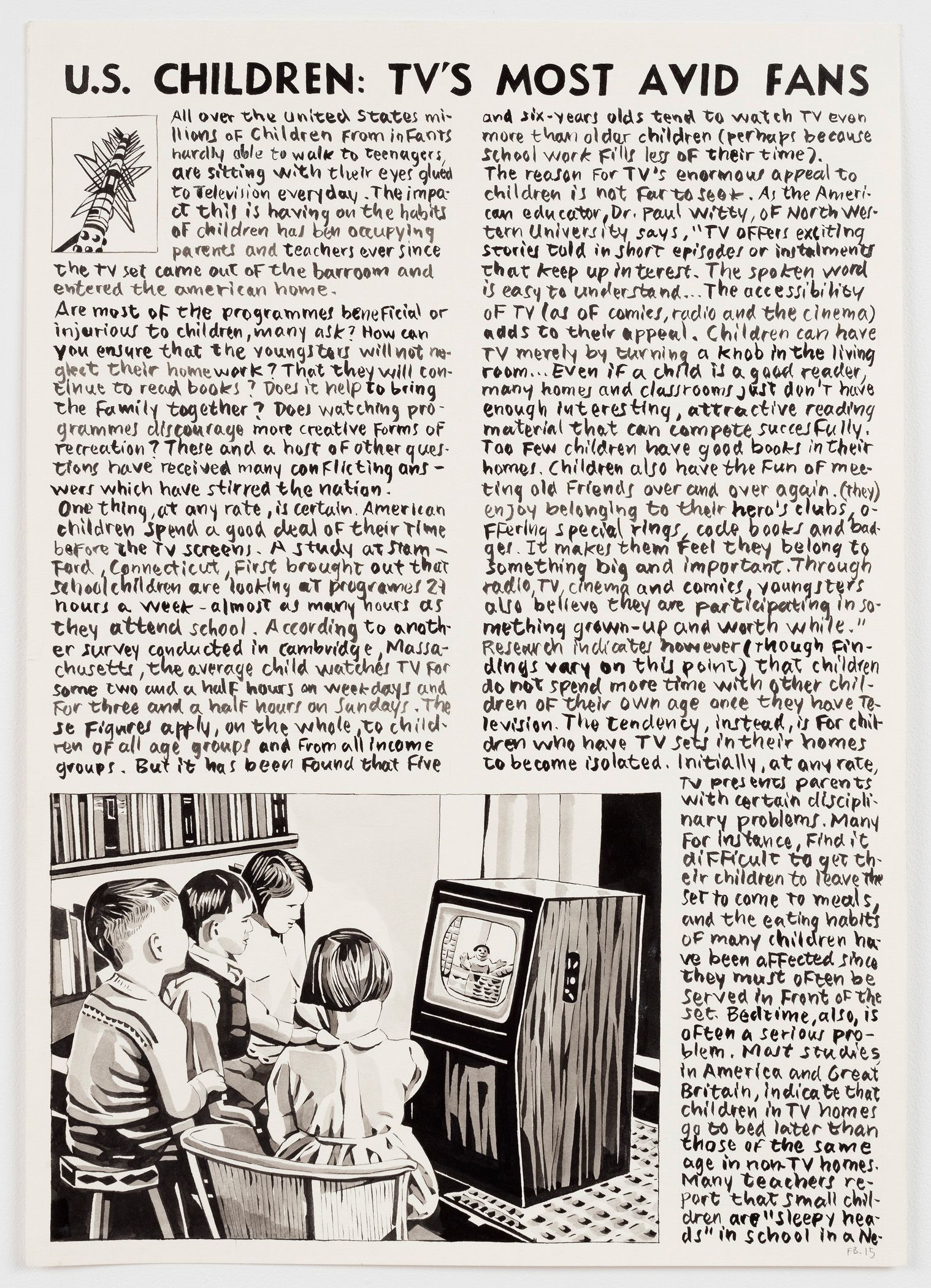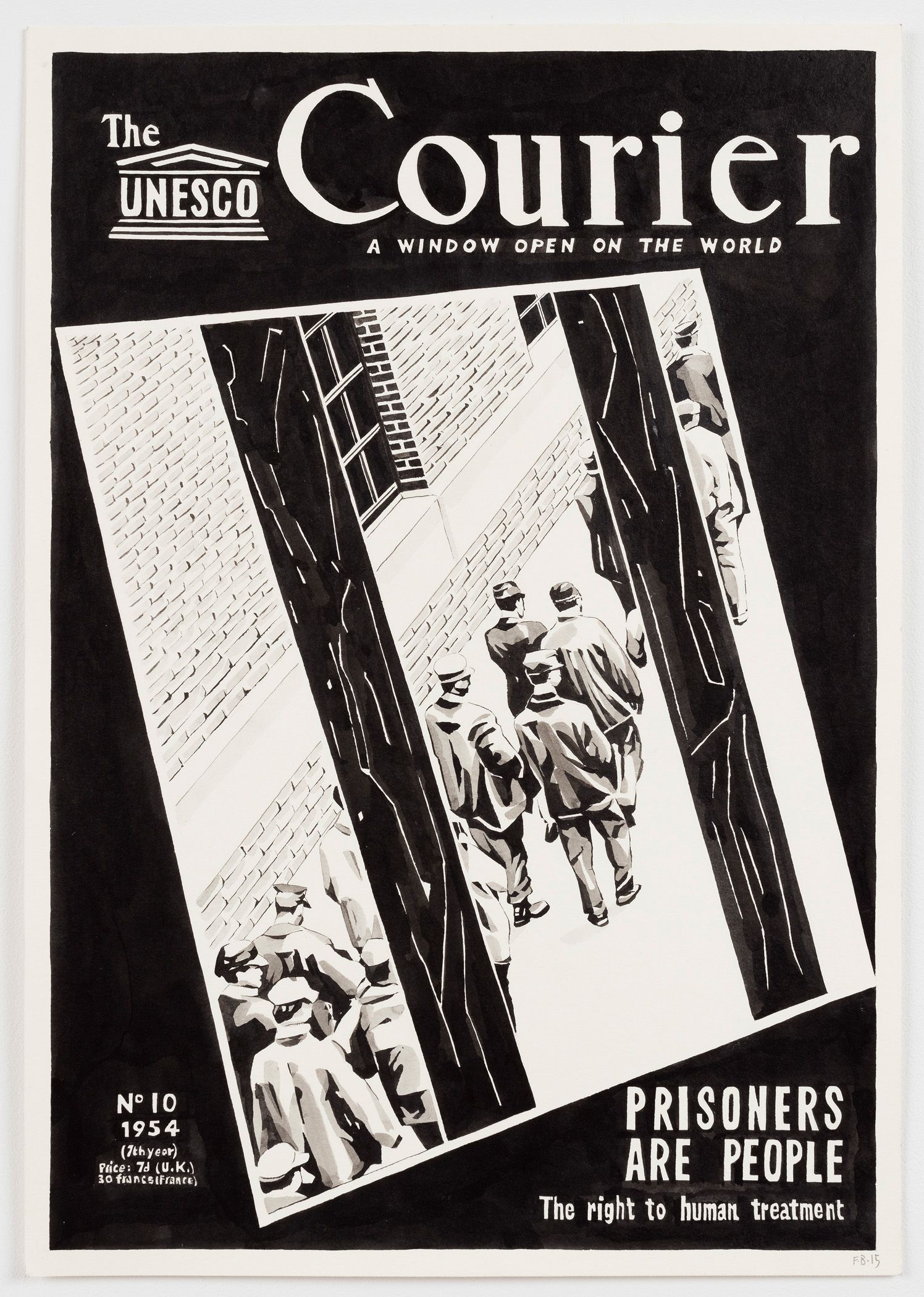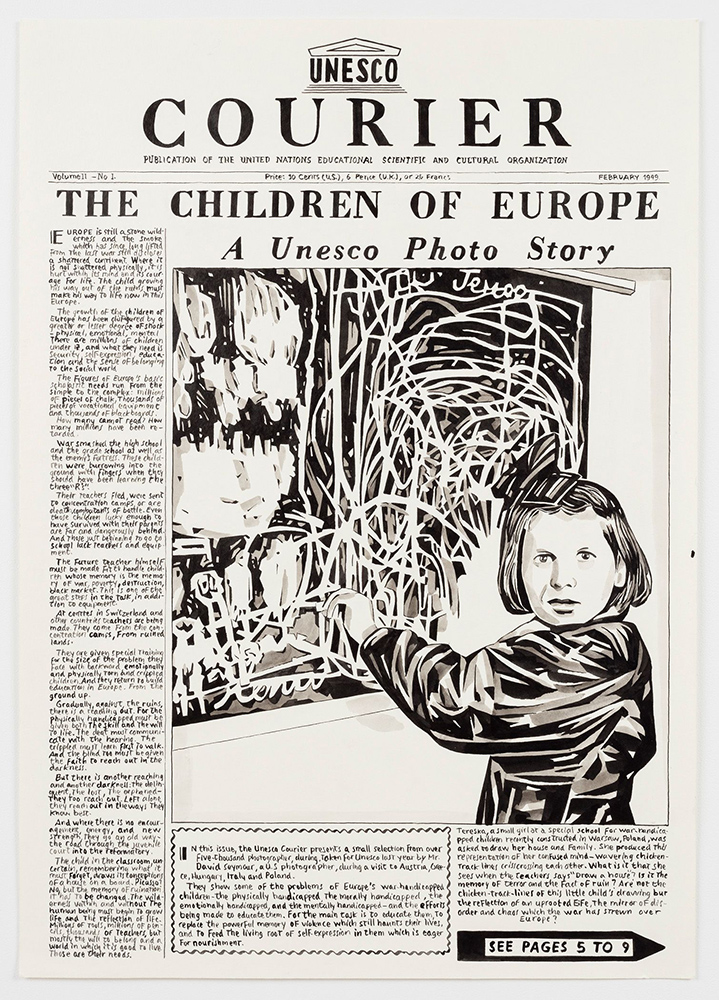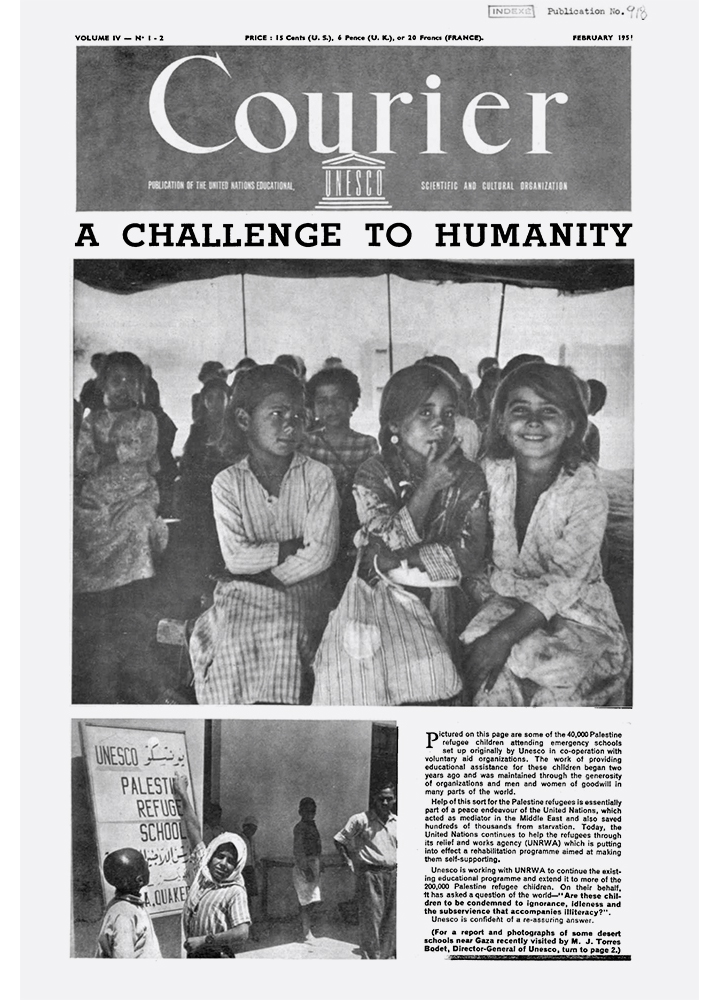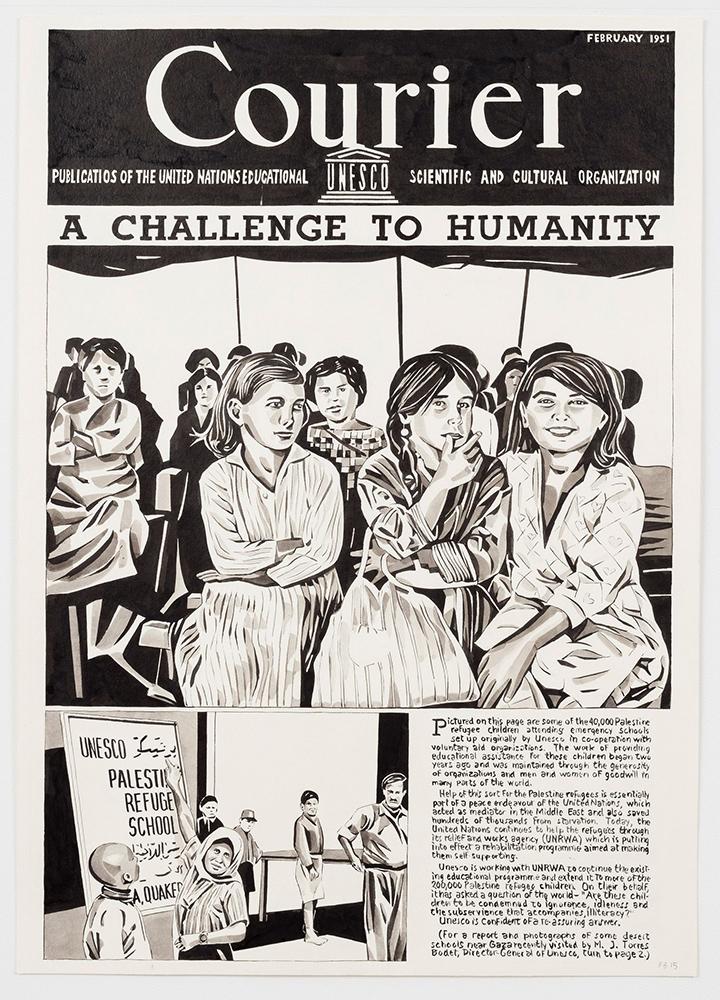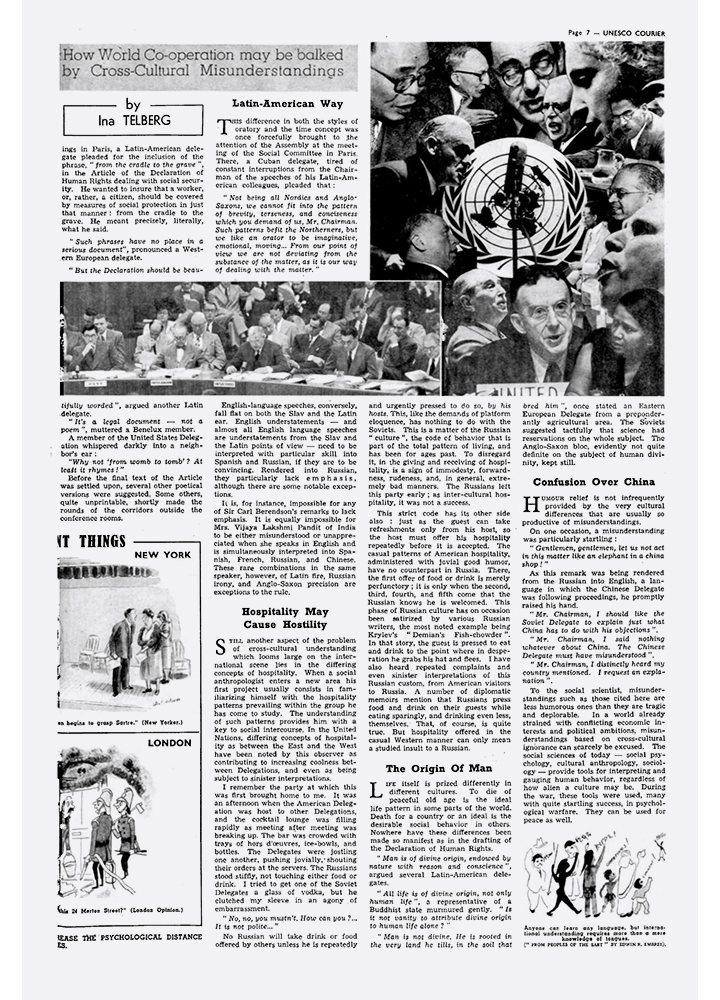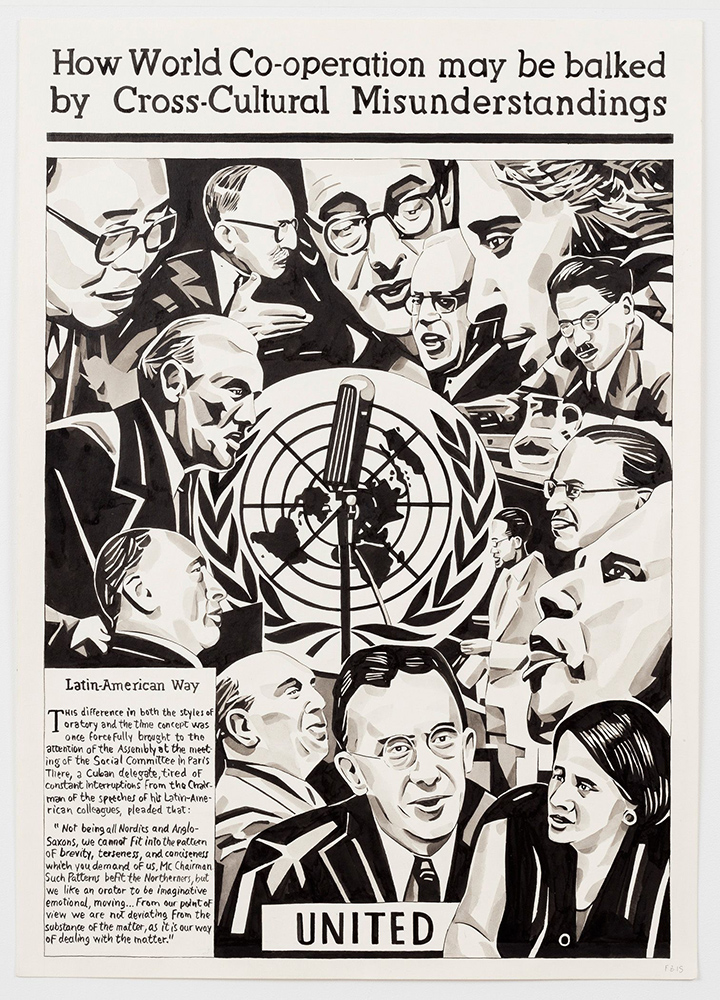In our current political climate, we are perhaps coming to understand how the presentation of news and information is anything but objective. Countless decisions go into each article in a magazine, website, or newspaper: from choices about art and design (what to photograph or feature in a graphic, where to place it on the page), to decisions about text (small or large headlines), to the ideas that the text conveys.
A Page Out of History
Peruvian artist Fernando Bryce (b. 1965) has created acclaimed works based on these considerations. He presents them through drawings and installations that re-create archival documents, with a focus on social, cultural, and political issues.
His 2015 work The Book of Needs, comprised of 81 ink-on-paper drawings, is one example. Shown at the Harvard Art Museums for the first time, beginning January 20, the massive work stretches across two walls in the University Research Gallery. Bryce selectively reconstructs images and text from early issues of the UNESCO Courier, a publication produced in English, French, and Spanish since 1948. An assemblage of reconstructed Courier articles, columns, and photographs, The Book of Needs presents topics that remain hauntingly relevant today: immigration, refugee crises, cultural difference, racism, indigeneity, and more.
The exhibition also includes a number of the original Courier editions that were integral to Bryce’s work. On loan from Harvard’s Widener Library, the copies help show how subjective decisions made in the telling and even the retelling of history can shift over time.
The timing of this exhibition couldn’t be more appropriate, said Mary Schneider Enriquez, the Houghton Associate Curator of Modern and Contemporary Art. “Not only are the themes of The Book of Needs so pertinent today,” Schneider Enriquez said, “the installation also connects directly with the special exhibition Inventur—Art in Germany, 1943–55, which focuses on postwar art.” The Book of Needs and Inventur will be exhibited in adjacent galleries, enabling visitors to make links between the two.
Painstaking Creativity
Bryce is interested in the relationship of images to truth and history, and particularly in “understanding images as political fact. . . . When I see a picture that fascinates me, I’m always interested in its function. That’s my political view of pictures. I wonder what it was made for and I do something different with it,” he said in an ArtMag.com interview.
In reconstructing archival documents, Bryce works by hand, painting with tiny brushes to re-create images and also, in some cases, large chunks of text. He calls this process “mimetic analysis” and refers to himself as a parahistorian. His goal is to reveal history rather than describe or relay it. “Bryce’s process is amazingly fastidious, exacting, and complex,” Schneider Enriquez said.
His process invites comparison with that of medieval scribes, who recorded and sometimes re-created written documents, said Schneider Enriquez. Even today, scribes work in some parts of the developing world, aiding people who aren’t able to read or write.
To Schneider Enriquez, that connection recalls “a very human element. It’s much like reaching out in society and helping. It’s a necessity, but there is a beauty to it.”
The placement of images and text is another element over which Bryce exerts control, putting his own emphasis on what he wants viewers to see. For instance, in a segment of the installation based on a Courier page with the headline “How World Co-operation may be balked by Cross-Cultural Misunderstandings,” Bryce enlarged an image that was a small part of the original layout, making it a full-page drawing in his version. Both are shown below.
Compelling Subjects
Bryce moderates the placement of each of the 81 pieces of the installation as well. Though the drawings vary in size, the installation is intended to be experienced as a single work, viewed from left to right. It begins with one piece that reads simply The Book of Needs, followed by three related and well-known publications that introduce themes critical to the Courier: Race and History (1952), by Claude Levi-Strauss; Race and Culture (1956), by Michel Leiris; and Race and Biology (1951), by L. C. Dunn.
The installation’s size and shape make it well-suited for a range of teaching purposes. In fact, Schneider Enriquez said, since The Book of Needs was acquired two years ago, a number of classes have already studied various parts of it in the museums’ Art Study Center. The work has been considered through the lenses of war, conflict, 20th-century sociopolitical change, and other contemporary themes.
“It’s a fantastically dynamic piece, and it has been great for allowing students to think about these topics,” Schneider Enriquez said.
